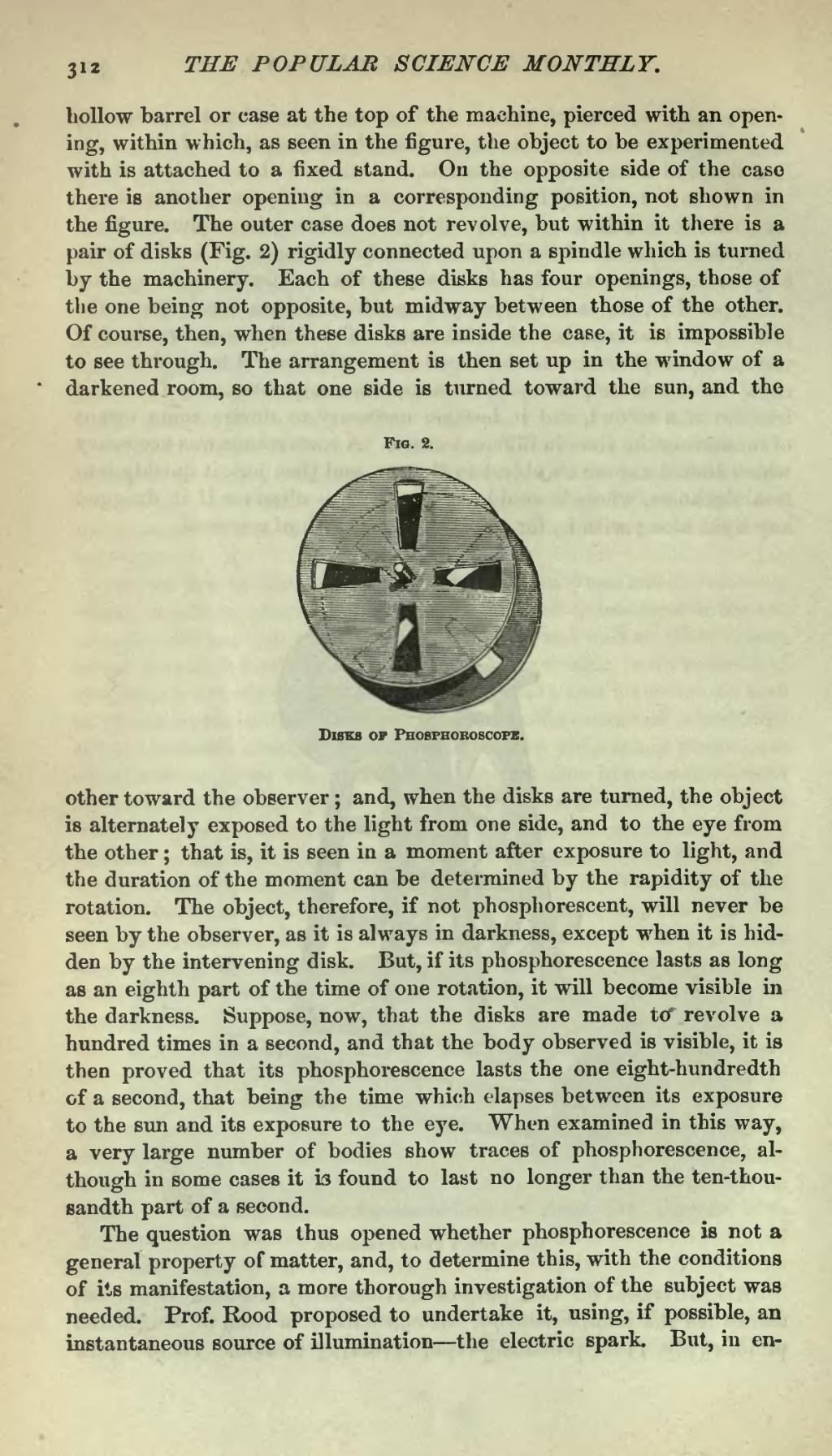hollow barrel or case at the top of the machine, pierced with an opening, within which, as seen in the figure, the object to be experimented with is attached to a fixed stand. On the opposite side of the case there is another opening in a corresponding position, not shown in the figure. The outer case does not revolve, but within it there is a pair of disks (Fig. 2) rigidly connected upon a spindle which is turned by the machinery. Each of these disks has four openings, those of the one being not opposite, but midway between those of the other. Of course, then, when these disks are inside the case, it is impossible to see through. The arrangement is then set up in the window of a darkened room, so that one side is turned toward the sun, and the
Fig. 2.

Disks of Phosphoroscope.
other toward the observer; and, when the disks are turned, the object is alternately exposed to the light from one side, and to the eye from the other; that is, it is seen in a moment after exposure to light, and the duration of the moment can be determined by the rapidity of the rotation. The object, therefore, if not phosphorescent, will never be seen by the observer, as it is always in darkness, except when it is hidden by the intervening disk. But, if its phosphorescence lasts as long as an eighth part of the time of one rotation, it will become visible in the darkness. Suppose, now, that the disks are made to revolve a hundred times in a second, and that the body observed is visible, it is then proved that its phosphorescence lasts the one eight-hundredth of a second, that being the time which elapses between its exposure to the sun and its exposure to the eye. When examined in this way, a very large number of bodies show traces of phosphorescence, although in some cases it is found to last no longer than the ten-thousandth part of a second.
The question was thus opened whether phosphorescence is not a general property of matter, and, to determine this, with the conditions of its manifestation, a more thorough investigation of the subject was needed. Prof. Rood proposed to undertake it, using, if possible, an instantaneous source of illumination—the electric spark. But, in en-
